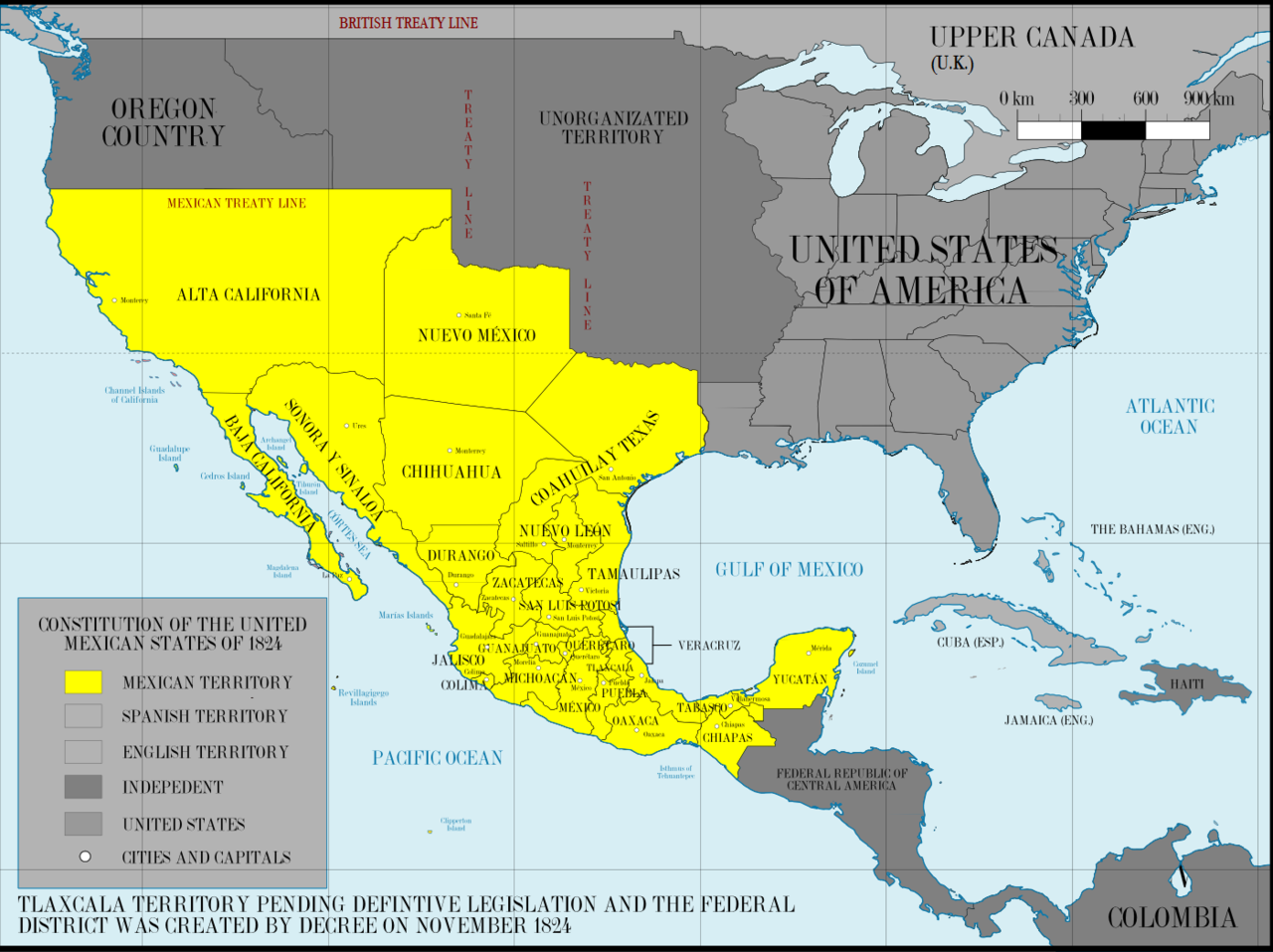28 February 2022
The name of the country and the US state is a borrowing from Spanish, which in turn is a borrowing from Nahuatl. The name originally referred to what is now Mexico City, but eventually came to refer to the entire country.
The more common Nahuatl name for what is now Mexico City was Tenochtitlan, meaning either Place of the High Priest Tenoch or Place of the Fruit of the Cactus. But the Spanish took to calling it by a less-used Nahuatl name, Metztlixihtlico. The origin of this Nahuatl word is uncertain. One origin gives it as mētztli (moon) + xictli (navel/center) + -co (place), or Place of the Center/Navel of the Moon. Alternatively, it could be associated with Mexitli, one of the names for the Aztec god of war.
Hernán Cortés began the conquest of the Aztec Empire in 1519 and completed it in 1521 with the seizure of Tenochtitlan and the establishment of the of colony of Nueva España (New Spain), renaming the capital as Ciudad de México (Mexico City). The Spanish ruled Mexico until 1821, when the country achieved its independence.
The name of New Mexico is a calque of the Spanish Nuevo México. The Spanish colony, whose full name was Santa Fe de Nuevo México (Holy Faith of New Mexico), encompassed most of present-day New Mexico, as well as portions of what are now Texas, Colorado, Kansas, and Oklahoma. The Spanish colony lasted from 1598–1821, after which it was a Mexican state until 1846, when it was seized by the United States during the Mexican-American War. New Mexico became the forty-seventh state in 1912. The Indigenous people dwelling there include the Pueblo, Navajo, Apache, and Comanche peoples.
The name Mexico appears in English-language writing by 1555. From Pietro Martire d’Anghiera’s The Decades of the New Worlde:
Newe Spayne is that parte of the continent or firme lande that lyeth West and South frome the lande of Floryda. This was subdued to thempire [sic] of Castile by the ryght noble gentelman Ferdinando Cortese the marquesse of the vale of Quaxaca. In this lande are many provinces co[n]teynyng in the[m] in mauer [sic] innumerable cities, amonge which that is the chiefe which the India[n]s caule Mexico or Temixtitan.
Sources:
d’Anghiera, Pietro Martire. The Decades of the New Worlde. London: William Powell for Edward Sutton, 1555, 315. Early English Books Online (EEBO).
Bright, William. Native American Placenames of the United States. Norman: U of Oklahoma Press, 2004.
Everett-Heath, John. Concise Oxford Dictionary of World Place Names, sixth ed. Oxford: Oxford UP, 2020, s.v. Mexico, Mexico City, New Mexico. Oxfordreference.com.
Oxford English Dictionary, third edition, December 2001, s.v. Mexican, n. and adj.
Image credit: Gigette, 2013, used under a Creative Commons Attribution-Share Alike 3.0 Unported license.

